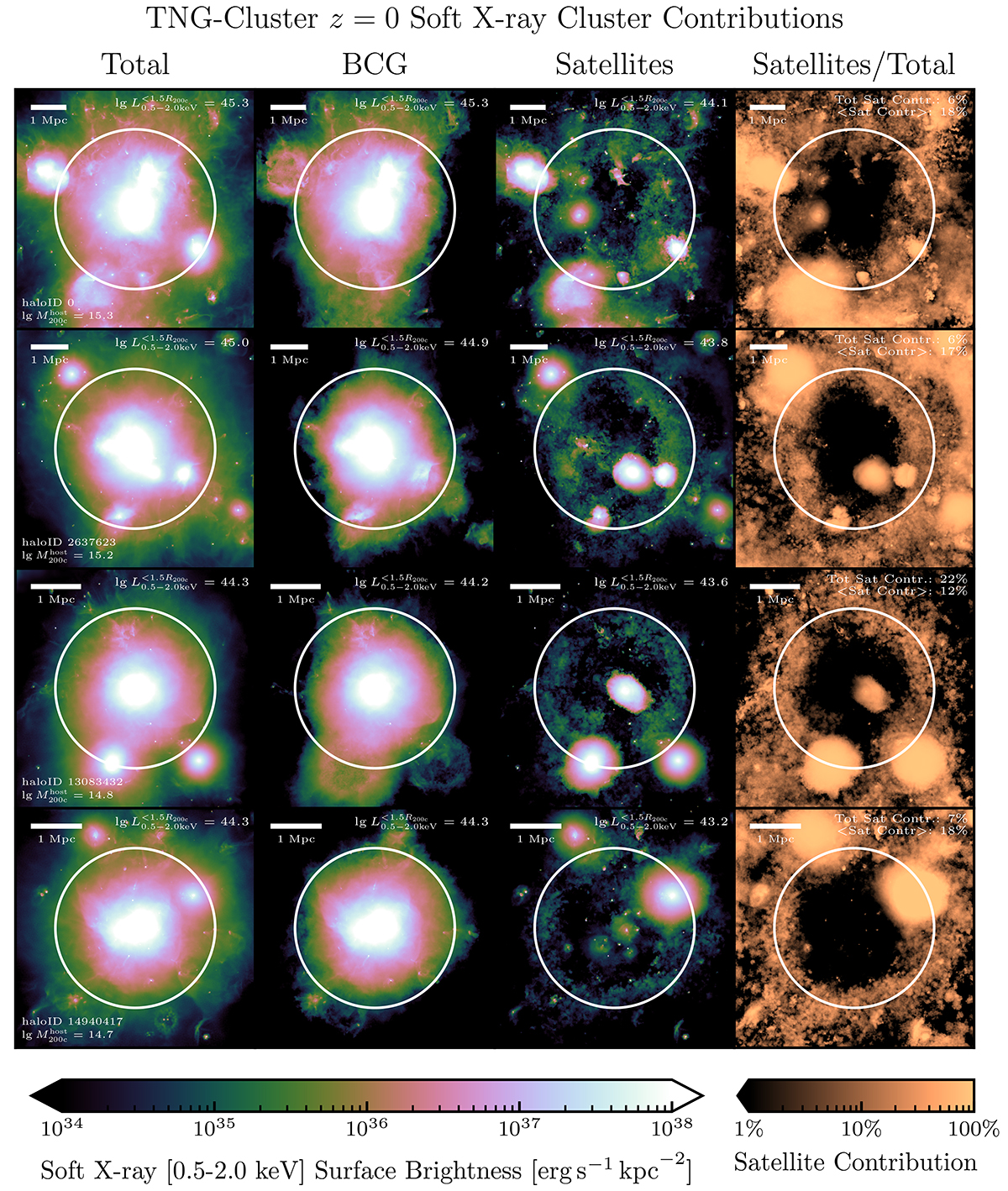Fig. 10.

Download original image
Separating cluster soft X-ray emission into its main sources, for four clusters in TNG-Cluster. We break down the total soft X-ray emission (Total) of an example cluster into its main components: gas that is gravitationally bound to the main halo, i.e., brightest central galaxy (BCG), and gas bound to the satellite galaxies (Satellites). Here, satellites are all galaxies besides the BCG that lie within the field of view of the image 3 R200c × 3 R200c. We include the haloID and mass ![]() in units of [log10 M⊙] in the lower left in the Total image, and the soft X-ray luminosity
in units of [log10 M⊙] in the lower left in the Total image, and the soft X-ray luminosity ![]() within a projected aperture 1.5 R200c in units of [log10 erg s−1] in the top right of each panel. We compute the fractional contribution from satellites to the total soft X-ray emission (Satellites/Total), and include both the total soft X-ray contribution from satellites and the mean satellite contribution per pixel in the upper right corner. In all panels the circles denote R200c. The satellite contributions vary from halo-to-halo, but in general satellites contribute ∼10% of the total soft X-ray flux within ≲1.5 R200c of the clusters.
within a projected aperture 1.5 R200c in units of [log10 erg s−1] in the top right of each panel. We compute the fractional contribution from satellites to the total soft X-ray emission (Satellites/Total), and include both the total soft X-ray contribution from satellites and the mean satellite contribution per pixel in the upper right corner. In all panels the circles denote R200c. The satellite contributions vary from halo-to-halo, but in general satellites contribute ∼10% of the total soft X-ray flux within ≲1.5 R200c of the clusters.
Current usage metrics show cumulative count of Article Views (full-text article views including HTML views, PDF and ePub downloads, according to the available data) and Abstracts Views on Vision4Press platform.
Data correspond to usage on the plateform after 2015. The current usage metrics is available 48-96 hours after online publication and is updated daily on week days.
Initial download of the metrics may take a while.


